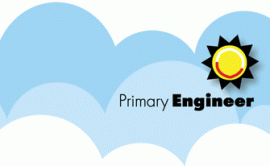Get moving!
Transport is a familiar topic focus for younger primary children. Exploring different aspects of 'getting moving' from a science point of view, this list provides ideas to use with children as they engage with a variety of different forms of transport, often in unfamiliar contexts. This list shows how to link science to the topic, tips on using the resources, suggestions for further use and background subject knowledge to support teachers in delivering the science objectives. The resources support the teaching of everyday materials , they also support early ideas around forces.
Visit the primary resources for cross curricular topics webpage to access all resource lists:
https://www.stem.org.uk/cross-curricular-topics-resources
Primary Engineer: Bloodhound SSC Build a Prototype Car
Bloodhound SSC is a car being designed to travel at 1050mph by a British Team, aiming to break the world land speed record. In this resource from Primary Engineer, children design and build a prototype car to investigate the use of stored energy such as balloons and rubber bands, using easy to find resources and tools. Much of the content of this resource is pitched well beyond the scope of KS1 children, but using the Bloodhound SSC car and related web film clips as a stimulus for investigation is bound to engage.
Children might, in response to the images and ideas they see, design and make their own prototype cars, using construction kits and junk modelling materials to build the fastest car they can. Choosing and using materials, aspects of aerodynamics, concerns about streamlining and the addition of nose cones to designs might all be investigated and the final cars tested competitively, in a race down a ramp and across the school hall floor.
Formula 1 in Schools
This short film clip discusses how F1 and motor sport can be the basis of a cross curricular project where children design and make racing cars, thinking about friction and the aerodynamics. We follow three classes and their teachers on the day of their big race, as they test the design of their model cars in various time challenges.
Provided by Reach Out CPD, the short film demonstrates one way in which science can be applied to a real life context.
Ticket to Ride
This activity pack contains nine activities on the theme of transportation and are great for use in class or in a science week or club. They include: the best method for carrying a heavy load, designing a paddleboat, investigating the balancing points in boats, looking at crater size and designing and making catapults.
Rocket Images and Video
NASA's Space Shuttle may be a well-known launch vehicle, but the majority of launches still take place using rockets. These regularly carry satellites into orbit. These materials show images of rockets, such as the Saturn V which powered the Apollo missions and current Delta and Atlas rockets. There is also a video showing the launch of a Delta rocket.
Rocket Mice
If you haven't aready discovered The Science Museum website and resource base, make sure you do! This activity, 'Rocket Mice', involves children in investigating what it takes to launch a 'rocket mouse', complete with ears, tail and whiskers, into the air. Exploring questions such as, 'What difference does the size of my mouse's ears make?' or 'How does the size of the container the mouse launches from affect how high he flies?', allows children to have early experiences of forces in action and of fair testing.
Do Try This at Home*suitable for home teaching*
This set of twelve colourful postcards provides hands on activities which link to the topics of electricity, sound, forces, and changes of state. Ideal for use in the classroom, the mini-investigations are fun to do and get children thinking about the concepts involved. They are also perfect for use in after school clubs and science weeks.
Two cartoon characters, Marvin and Milo demonstrate the fun experiments, which are designed to appeal to primary age children. Of the activity ideas included, Alka -Seltzer rockets and making a foil boat are most relevant to this topic.
This resource has been provided by the Institute of Physics.
International Space Station (ISS) Education Kit - Primary
The ISS Education Kit, from ESA, is a resource for teachers with ideas on how to use the International Space Station as a thematic frame for teaching a wide variety of topics.
The A4-sized binder contains four chapters devoted to explaining various aspects of life in space and what is it like to live and work on board the International Space Station. Each chapter contains background information, worksheets and a teachers' guide. A glossary and colour posters complete the content. Each chapter starts with the sections for the pupils with texts and worksheets and is followed by a “Teacher’s Guide”.
Chapter 2: A mission to space, includes a series of activities which are particularly relevant to this topic. Children sequence the stages of a rocket launch, make a simple rocket themselves and investigate how high it will fly.
CLEAPSS Marble Run competition
Challenge your class to take part in the 2017 CLEAPSS Primary Science competition. In 'Marble Keep-y-Uppy!', children have to design and make a marble run that will keep a marble in continuous motion for the longest time. There are prizes for all ages, including KS1, so encourage children in your class to have a go!
Design a boat
Children use a variety of materials to construct a boat that will float. They then investigate what size of load their boats might be able to carry, potentially testing their creations to destruction, as they risk them sinking to the bottom of a water tank! This is part of a larger collection of resources linked to to the Polar Explorer Programme, the educational programme linked to the RRS Sir David Attenborough research vessel.
Floating boat challenge
In this floating boat challenge, children are to build a boat that can float and support 25 pennies for at least 10 seconds —without leaking, sinking, or tipping over. Each team has access to limited materials, e.g. some plastic wrap, plastic straws, paper cups, masking tape and 25 pennies. They thentest their boats in a large water tank. The format of this resource may look quite wordy, but there are lots of photos showing possible boat designs using a variety of materials. Hopefully your class will come up with a lot more of their own creations.
Dancing in Science
A video showing a lesson idea for incorporating science and PE. Children explore their own movement and learn about how their bodies are affected by exercise. Photographs could be taken of different ways of moving and then in a next lesson children could work in groups each holding a card showing a different movement. They could order themselves to show movements from fastest to slowest and answer questions on simple comparisons. Other photograph cards could also be included and groups decide where they should go for example an adult walking, a remote control car moving, a toddler on a ride-on toy.
How Will Your Roly Poly Move?
Explore,design and make moving toys in this project which combines D& T and science. Working in pairs children could ask predict how different toys will move and then test this out. Children could investigate which type of roly poly travels the fastest using a ramp or whether roly polys with bigger wheels travel further than those with smaller wheels.






